|
 |
|
|
|
 |
|
 |
|
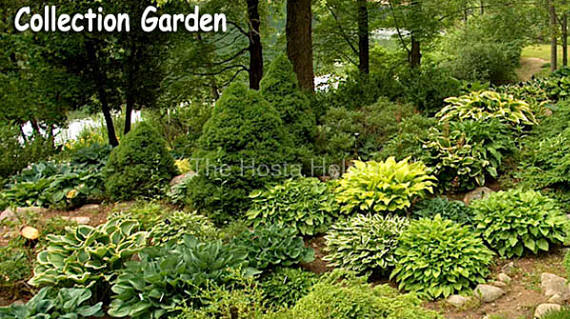 |
|
 Other
than their use in containers, hostas are generally
used in the landscape in one of two ways. For some
gardeners, the goal is to display as many hostas as
possible with a minimum use of companion plants.
This is called a "Collector's Garden" and the hostas
are grouped according to criteria related to the
plant itself. Groups from the same originator or of
similar size or related to a specific species or
some other criteria are used for the placement of
the plants. Minimal, if any, regard is given to the
classical landscape design concepts. Other
than their use in containers, hostas are generally
used in the landscape in one of two ways. For some
gardeners, the goal is to display as many hostas as
possible with a minimum use of companion plants.
This is called a "Collector's Garden" and the hostas
are grouped according to criteria related to the
plant itself. Groups from the same originator or of
similar size or related to a specific species or
some other criteria are used for the placement of
the plants. Minimal, if any, regard is given to the
classical landscape design concepts.
The Hosta Helper
database contains
over 15,000 hosta names
representing over 9,000 different hosta species and
cultivars. Obviously, the options for a hosta
collector are huge...but that is not what we are
talking about in this section. |
|
|
|
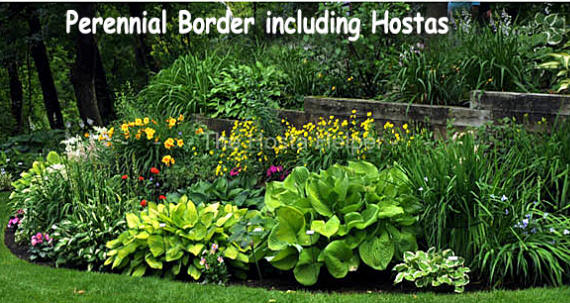 |
|
 The
second use of hostas in the ground in the landscape
is as part of a designed arrangement in a bed or
border. In this case, plant traits such as mature
size, leaf and flower color, texture and form are
used to make a visually pleasant display. Thousands
of types of annuals, herbaceous perennials,
biennials, bulbs, shrubs, trees and vines are
commonly used in home landscapes. The
second use of hostas in the ground in the landscape
is as part of a designed arrangement in a bed or
border. In this case, plant traits such as mature
size, leaf and flower color, texture and form are
used to make a visually pleasant display. Thousands
of types of annuals, herbaceous perennials,
biennials, bulbs, shrubs, trees and vines are
commonly used in home landscapes.
Hostas have been the
number one selling individual herbaceous perennial
for many years. Although often incorrectly thought
of as only a "shade" plant, hostas can add beauty
and interest to almost any landscape. |
|
|
|
 |
|
|
 |
 |
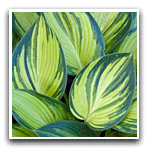 A "Star" is the leading character in
a play who has the primary role of
the protagonist. For a plant to serve this role in the landscape, it
needs to have traits that make it reach out and say, "Hey, look at
me!"
In hostas, this is most commonly
achieved with either a large or variegated plant. An upright form or
a massive size with color may also fill the bill. This plant will
serve as the "centerpiece" of the grouping and those playing the
other roles will relate to this star.
Visit the list of "Super
Stars" |
|
 |
 |
 |
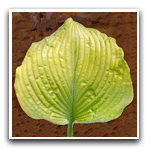 Second only to the star, the
supporting characters are there to complement the star. They are
great looking in themselves but, perhaps, not quite as fetching as
the star.
These plants often support the star
by being complementary in color or form or texture. They "play off"
the star and, in the process, they also display to their best
advantage.
An example would be a yellow or
yellow variegated plant playing off of an intense blue star in a
complementary color combination or vice versa with a yellow star and
a blue complementing plant. Visit the
list of "Guest Stars" |
|
 |
 |
 |
|
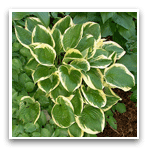 One step down the list below the supporting role is the bit player.
This is often a smaller plant or, perhaps, one with less "showiness"
but still has some attractive features that blend well with or
contrast well with the support plants. One step down the list below the supporting role is the bit player.
This is often a smaller plant or, perhaps, one with less "showiness"
but still has some attractive features that blend well with or
contrast well with the support plants.
Visit the list of "Bit
Players" |
|
 |
 |
 |
 An extra, also called a background actor, usually appears in a
nonspeaking capacity, often
in the background (for example, in an audience or on a busy street
scene). Their main role is to fill in the space around the Star,
Support and Bit Players and help to focus the viewer's eyes on the
main characters.
In a plant arrangement, these may be smaller, single colored
plants that fill in the space and may help to more easily identify
the Star. They may act as the framing element around the perimeters
of the major scene. Visit the list of
"Extras" |
|
 |
 |
 |
|
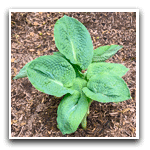 Theatrical backdrops are used to prevent you from
seeing the mess in the rear of the stage and to help you focus on
what is going on out front. In a hosta arrangement, this is usually
filled by large specimens of plain colored plants. They act as mass
and may also be used as a textural contrast. These hostas help to define the
back border of the grouping area. Theatrical backdrops are used to prevent you from
seeing the mess in the rear of the stage and to help you focus on
what is going on out front. In a hosta arrangement, this is usually
filled by large specimens of plain colored plants. They act as mass
and may also be used as a textural contrast. These hostas help to define the
back border of the grouping area.
Visit the list of "Scenery"
hostas. |
|
 |
 |
 |
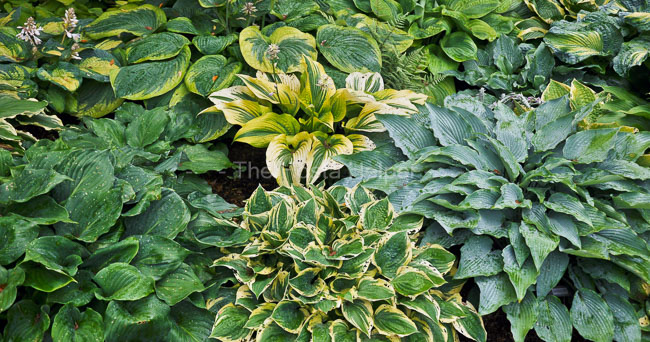 |
 |
 |
|
 |
|



